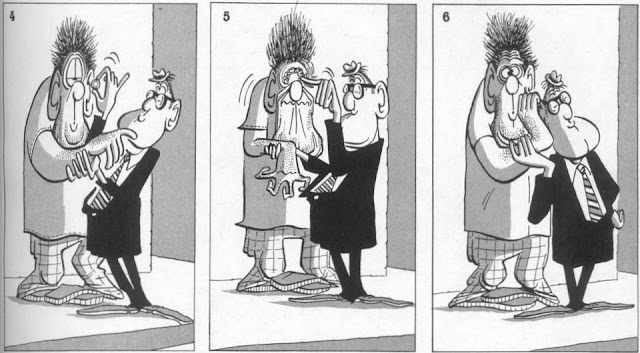I thought I'd take a stab at answering three questions that come up in cartoonists' conversations. The first is, "How dumb should a cartoon character be?"
The obvious answer is,"VERY dumb! The dumber the better!" That sounds right to me, but when you think about it, most dumb characters to date haven't been completely stupid.
Dumb characters aren't usually completely stupid. They're proud to be dumb.
They're both eager and stupid. They can't wait to get out of bed in the morning and do dumb things. Maybe totally dumb is the wrong way to go...but I admit that nothing else is as funny.
I don't hear any comments so I'll move on to the second question..."Should dumb characters slouch?"
In the main, they have pretty good posture.
Even the Python 'Gumbies" (above) don't slouch to much.
Classic dumb characters, the kind you see in one-panel print cartoons often slouch, but when you animate them...or in the case of live action, film them...giving them a slouch makes them appear lethargic and without goals. That can't be right.
No, in the main dumb characters shouldn't slouch. Er...okay, Beaky Buzzard slouched, and I don't have an answer for that.
The last question has to do with slouching when seated..."Are eager-stupid characters permitted to slouch when seated?" The answer to that is "Yes!" My proof for that is...well, they just are, that's all. It's my blog, and there's an end to it!
Space limits prevent me from addressing other pressing questions like..."How close should stupid characters stand when talking to each other?"
And "Do stupid people have equally stupid friends? Are they loners? Do they like to hang around intelligent foils?" These are important questions but we'll have to return to them another time.




























































